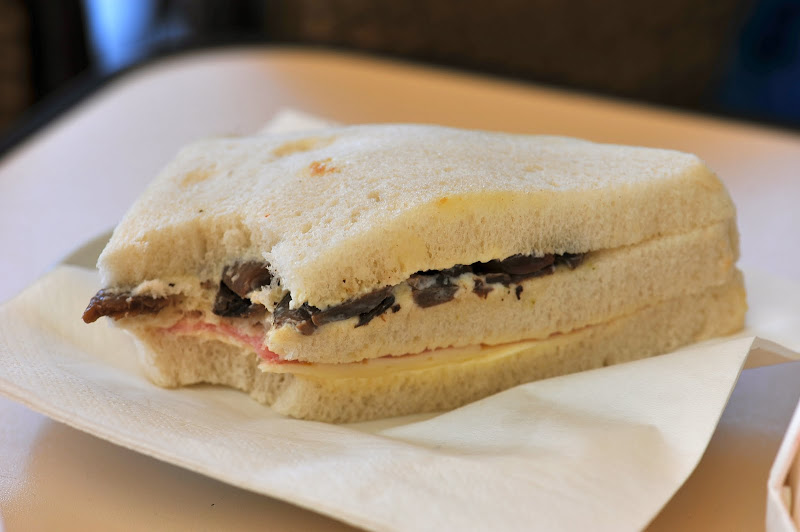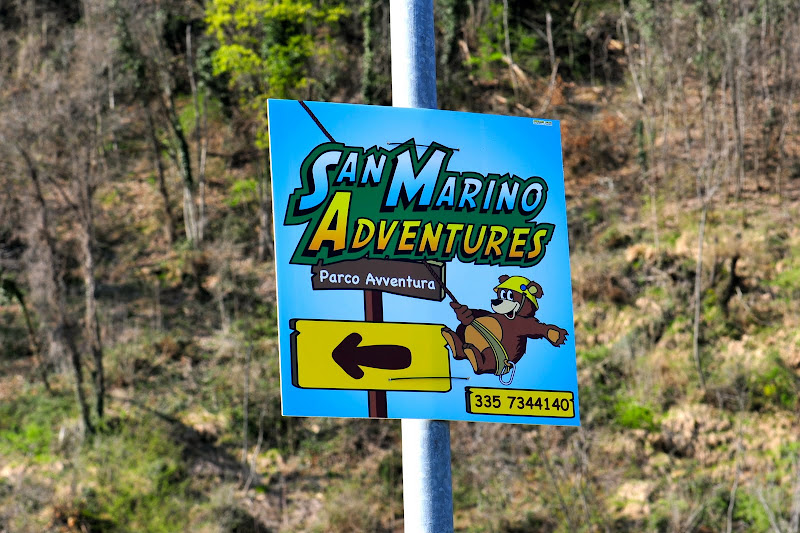 I don't like Swiss cheese. There, I said it. Now, I only mean "swiss cheese" in the American deli counter sense of the term - that mild, tangy cheese with the holes. Cheese from Switzerland is a whole other story, a personal favorite being gruyère. It's hard and earthy, a little sour, a little sweet. It can range from smooth and mild to chalky with crystals that bite at your tongue sharply. Chances are you've tasted it. Fondue is most often made using gruyère, as is the gooey lactic cover of french onion soup. It's usually that large, thin rectangular slab on a cheese plate. The wheels are huge, two feet in diameter and over 77 pounds, so slices don't really get much smaller.
I don't like Swiss cheese. There, I said it. Now, I only mean "swiss cheese" in the American deli counter sense of the term - that mild, tangy cheese with the holes. Cheese from Switzerland is a whole other story, a personal favorite being gruyère. It's hard and earthy, a little sour, a little sweet. It can range from smooth and mild to chalky with crystals that bite at your tongue sharply. Chances are you've tasted it. Fondue is most often made using gruyère, as is the gooey lactic cover of french onion soup. It's usually that large, thin rectangular slab on a cheese plate. The wheels are huge, two feet in diameter and over 77 pounds, so slices don't really get much smaller. Driving into the region, we saw and smelled cows immediately. Holsteins and "Swiss browns" (as they're known in America) dotted the green, rolling landscape and a pungent mix of manure and milk odor wafted through the crisp, clean air. The bovine are owned by cooperatives and their milk is delivered twice daily to whichever dairy is within 12 miles of their pastures. After the wheels are produced, the cooperatives are given some, which they age however they see fit (as long as the cave temperatures meet official Gruyère AOC standards). All of this means that the cheese is never branded as the product of an individual producer or fromagerie. Gruyère is gruyère is gruyère. The difference in type comes only from how long its been aged, where the pastures are located and in what season it was made. When the cows can feed on wild flowers and fresh grass, like right now, the cheese is said to be the tastiest.
Driving into the region, we saw and smelled cows immediately. Holsteins and "Swiss browns" (as they're known in America) dotted the green, rolling landscape and a pungent mix of manure and milk odor wafted through the crisp, clean air. The bovine are owned by cooperatives and their milk is delivered twice daily to whichever dairy is within 12 miles of their pastures. After the wheels are produced, the cooperatives are given some, which they age however they see fit (as long as the cave temperatures meet official Gruyère AOC standards). All of this means that the cheese is never branded as the product of an individual producer or fromagerie. Gruyère is gruyère is gruyère. The difference in type comes only from how long its been aged, where the pastures are located and in what season it was made. When the cows can feed on wild flowers and fresh grass, like right now, the cheese is said to be the tastiest. The region - and the cheese - are named after the town of Gruyères. It is as picturesque as can be, with its castle atop the hill. There is not much more than a single, wide cobbled street and a few narrow side alleys in the namesake village. We found it mostly empty, with just two dozen or so tourists snapping pictures and loading up on black and white spotted souvenirs. Locals only eat fondue in the winter time, but in the little village, the sour scent of pots a-bubbling emanated from cafe after cafe.
The region - and the cheese - are named after the town of Gruyères. It is as picturesque as can be, with its castle atop the hill. There is not much more than a single, wide cobbled street and a few narrow side alleys in the namesake village. We found it mostly empty, with just two dozen or so tourists snapping pictures and loading up on black and white spotted souvenirs. Locals only eat fondue in the winter time, but in the little village, the sour scent of pots a-bubbling emanated from cafe after cafe. We stayed at a farmhouse in Pringy, right outside Gruyères proper, and learned from our hostess that it belonged to a dairy cooperative. The cows out back contributed to our breakfast the next morning, a wedge of gruyère, bread and some homemade yogurt that Merlin mistook for cream (realizing his mistake when it separated upon contact with his coffee). Being as we'd only eaten bread and cheese for about 25hours at this point, the jar of prune jam on our breakfast table felt like an act of mercy. The farmhouse hallway was lined with prize ribbons and old cow bells. All throughout the region you could hear a chorus of them, ringing like a thousand mini church bells. The heavy, musical clang followed us everywhere, the percussion backing the wind section of the spring birds.
We stayed at a farmhouse in Pringy, right outside Gruyères proper, and learned from our hostess that it belonged to a dairy cooperative. The cows out back contributed to our breakfast the next morning, a wedge of gruyère, bread and some homemade yogurt that Merlin mistook for cream (realizing his mistake when it separated upon contact with his coffee). Being as we'd only eaten bread and cheese for about 25hours at this point, the jar of prune jam on our breakfast table felt like an act of mercy. The farmhouse hallway was lined with prize ribbons and old cow bells. All throughout the region you could hear a chorus of them, ringing like a thousand mini church bells. The heavy, musical clang followed us everywhere, the percussion backing the wind section of the spring birds. Above is the Maison de Gruyère, a larger scale fromagerie which conducts tours daily. It's also the only place I've ever seen include "alcohol-free fondue" on their menu. Doesn't the liquor in the wine cook off? We couldn't bear to go watching cheese being made for an hour while we felt so full of it. So, instead, we set off on a two hour hike between this dairy and the one at the top of Mount Moleson, where the very special "Alpage" Gruyère is made. Taking a look at these wheels once more and reasoning that we'd probably consumed about a third of one ourselves, we decided we'd tack on another trail and make our two hour hike a four hour one.
Above is the Maison de Gruyère, a larger scale fromagerie which conducts tours daily. It's also the only place I've ever seen include "alcohol-free fondue" on their menu. Doesn't the liquor in the wine cook off? We couldn't bear to go watching cheese being made for an hour while we felt so full of it. So, instead, we set off on a two hour hike between this dairy and the one at the top of Mount Moleson, where the very special "Alpage" Gruyère is made. Taking a look at these wheels once more and reasoning that we'd probably consumed about a third of one ourselves, we decided we'd tack on another trail and make our two hour hike a four hour one. The walk, officially called "Sentier des Fromageries" was beautiful and steep. It took us through cow pastures, past wooden barns and dairies and over a dozen of these springs. Some emptied out into hollowed out logs , all provided water that was ice cold and very, very welcome. We didn't see many other walkers on our way, most likely because there are over 10 marked trails in the surrounding area - all of which were shorter and less difficult than this one. At the top of our climb (elevation: 1100 meters), we found the fromagerie (closed), a self-service cafeteria (which only sold wine by the half liter. When in Europe!) and an alpine coaster. Everyone else had arrived via cable-car.
The walk, officially called "Sentier des Fromageries" was beautiful and steep. It took us through cow pastures, past wooden barns and dairies and over a dozen of these springs. Some emptied out into hollowed out logs , all provided water that was ice cold and very, very welcome. We didn't see many other walkers on our way, most likely because there are over 10 marked trails in the surrounding area - all of which were shorter and less difficult than this one. At the top of our climb (elevation: 1100 meters), we found the fromagerie (closed), a self-service cafeteria (which only sold wine by the half liter. When in Europe!) and an alpine coaster. Everyone else had arrived via cable-car. In Gruyères, I had my very first fondue (not counting chocolate ones). It was everything I expected it to be: undeniably tasty, but not something I would just wake up and be in the mood for. My favorite thing about fondue: the fact that the long, skinny forks make the act of dunking chunks of bread into a bubbling pool of melted cheese seem dainty.
In Gruyères, I had my very first fondue (not counting chocolate ones). It was everything I expected it to be: undeniably tasty, but not something I would just wake up and be in the mood for. My favorite thing about fondue: the fact that the long, skinny forks make the act of dunking chunks of bread into a bubbling pool of melted cheese seem dainty.
You have read this article Castles /
Countryside /
Food /
Switzerland
with the title April 2011. You can bookmark this page URL http://africathoughts.blogspot.com/2011/04/unholy-swiss-cheese-gruyere.html. Thanks!

























































